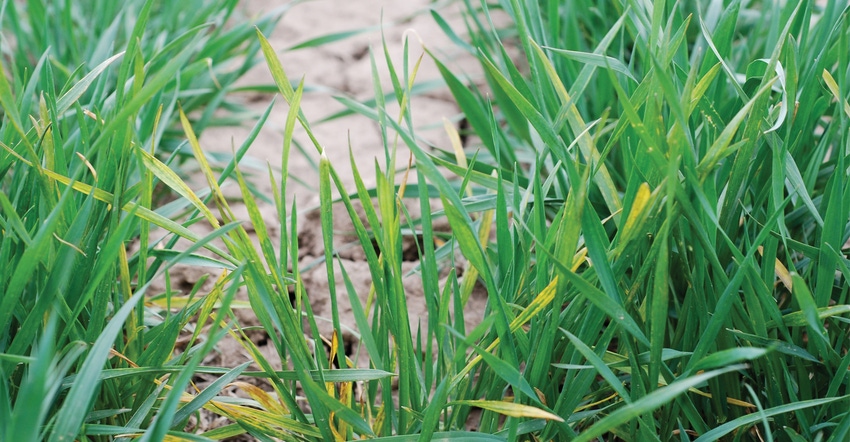
One of the most destructive little pests out there is the wheat curl mite. As a very wet end to August and beginning of September draw to a close, plentiful numbers of those mites are feasting on fields of lush volunteer wheat, which is growing like crazy.
That has farmers such as Vance Ehmke, who farms in Lane and Scott counties, thinking about the disaster that resulted from a similar situation in 2016: devastating levels of wheat streak mosaic virus in the next year’s crop.
There is still time to prevent a disaster of the level of 2017, which cost wheat growers millions of dollars in lost yields. However, action needs to be taken soon. That action would be spraying ALL fields of volunteer wheat with herbicide to eliminate the wheat curl mite before the 2019 crop goes in the ground over the coming weeks.
The epidemic of disease caused several producers to have near-total losses on thousands of acres in Wichita, Greeley, Scott and Lane counties. Lesser losses across the state were observed. KSU Extension plant pathologist Erick DeWolf confirmed that the wheat streak mosaic virus or similar viruses — also caused by the wheat curl mite — was the cause of those losses.
In 2016, farmers refused to kill the volunteer wheat. Some complained of the cost of herbicide. Others saw the lush volunteer fields as free forage for cattle. Unfortunately, in the latter case, their "free" cattle food carried a high price tag paid by their neighbors.
In a recent blog, Ehmke offered food for thought.
"From my perspective, the volunteer is a weed that is removing moisture and nutrients that won’t be available for the next crop—or that will have to be replaced at a cost, of course," he wrote. "Yields of the next crop can certainly be reduced because of the lost moisture used by the volunteer. And if this is on rented land, do you think the landlord might have an interest in how his costs and returns are being affected? Further, do you think landlords would approve of their tenant using poor farming practices like this. Do they or the farmers themselves have any moral or ethical responsibility to make sure others are not put at risk. Or do they have any legal responsibility?"
Plant pathologists say that there other potential "green bridge" crops that might serve as food for curl mites even if volunteer wheat were controlled. Among them are summer annual grasses like foxtail, barnyard grass, grassy sandbur and jointed goat grass. In areas where the roadsides have an abundance of those grasses, mowing by county governments could help reduce the problem.
Producers who are concerned about curl mites can delay planting wheat until curl mite hosts have been destroyed and time has gone by for the mites to die off. Producers can also plant varieties with resistance to wheat streak mosaic virus. Those include Oakley CL, Clara CL and Joe.
There are no miticides, pesticides or seed treatments that have been shown to be an effective treatment for the wheat curl mite.
About the Author(s)
You May Also Like




